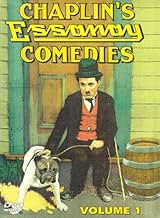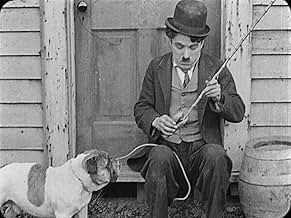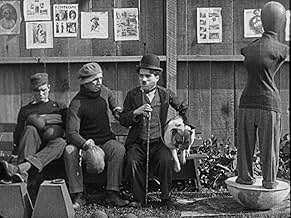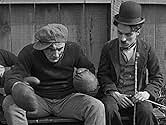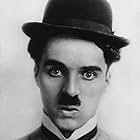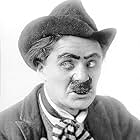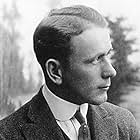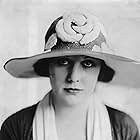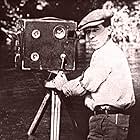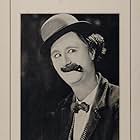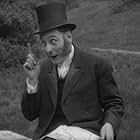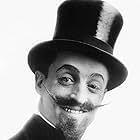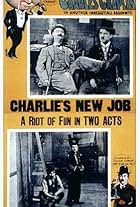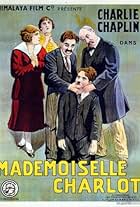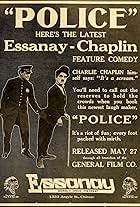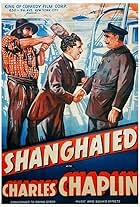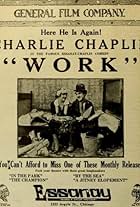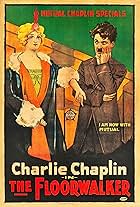The Champion
- 1915
- 31m
Walking along with his bulldog, Charlie finds a "good luck" horseshoe just as he passes a training camp advertising for a boxing partner "who can take a beating." After watching others lose,... Read allWalking along with his bulldog, Charlie finds a "good luck" horseshoe just as he passes a training camp advertising for a boxing partner "who can take a beating." After watching others lose, Charlie puts the horseshoe in his glove and wins. The trainer prepares Charlie to fight t... Read allWalking along with his bulldog, Charlie finds a "good luck" horseshoe just as he passes a training camp advertising for a boxing partner "who can take a beating." After watching others lose, Charlie puts the horseshoe in his glove and wins. The trainer prepares Charlie to fight the world champion. A gambler wants Charlie to throw the fight. He and the trainer's daught... Read all
- Bob Uppercut - Champion
- (uncredited)
- Sparring Partner
- (uncredited)
- Second Sparring Partner
- (uncredited)
- …
- First Sparring Partner
- (uncredited)
- …
- Second Stretcher Bearer
- (uncredited)
- Bit Role
- (uncredited)
- Bit Role
- (uncredited)
- Second Cop
- (uncredited)
- Sparring Partner
- (uncredited)
- Trainer's Daughter
- (uncredited)
- Bit Role
- (uncredited)
- Sparring Partner
- (uncredited)
- Ringside Vendor
- (uncredited)
- Spike Dugan
- (uncredited)
- Crooked Gambler
- (uncredited)
- Director
- Writer
- All cast & crew
- Production, box office & more at IMDbPro
Storyline
Did you know
- TriviaThe film was restored in 2014 through the Chaplin Essanay Project thanks to the financial support of the Niles Essanay Silent Film Museum.
- ConnectionsEdited into Chase Me Charlie (1918)
During his apprenticeship at Keystone in 1914 Chaplin learned the rudiments of filmmaking from Mack Sennett, who liked his comedies low and fast. Thus, in his earliest movies Chaplin is concerned only with action and gags, and doesn't seem to care whether the viewer likes his character or not; sometimes he's an out-and-out rotter. But with this new series for the Essanay company Chaplin learned, first, to slow down a little and let things unfold as they may. More importantly, he learned to develop a sympathetic character viewers could care about.
The opening of The Champion shows Charlie sitting on a stoop with his only friend, an endearingly ugly bulldog named Spike, as they eat a meal. Charlie offers a sausage to Spike who, amusingly, chooses to eat only after the sausage has been properly seasoned. It's a charming scene and a leisurely one, and it sets an agreeable tempo. By the time the sequence is over, whether we've seen Charlie before or not, we like this poor guy and his ugly dog, and we're rooting for them. When Charlie decides to try his luck as a boxer he even manages to retain our sympathy when he employs less-than-ethical means to knock out his foe.
Later, we're troubled when Charlie appears to flirt with the idea of accepting a bribe from a crooked gambler, but ultimately the crook gets what he deserves and Charlie is more The Good Guy than ever. This sequence, in some respects, is the funniest in the entire film. Gambler Leo White is hilariously hammy, and Charlie peppers us with gags using every available prop: the paper money he grips in his mouth, the gun that points every which way, and even Leo White's villainous mustache, which Charlie reaches over and twirls one step ahead of the villain.
Everything builds towards the climactic battle. Chaplin fans taking the long view might regard this as a dry run for the big fight in City Lights, made in 1931, but for my money the boxing match in The Champion can hold its own as a great sequence in its own right. In addition to being well staged and beautifully timed, the scene features several notable participants silent film buffs will recognize. Charlie's tubby opponent in the ring is character actor Bud Jamison, at the beginning of a 30-year career supporting just about every prominent comedian of the era. In the stands meanwhile are two prominent players of the day, G. M. "Broncho Billy" Anderson and Ben Turpin. Anderson was among the very first Western stars, and also happened to be a co-founder of the Essanay company, producers of this film. Therefore Anderson was in effect Chaplin's boss, and his cameo (as a highly enthusiastic spectator) can be seen as something of a good-natured inside joke. Ben Turpin, on the other hand, had co-starred with Chaplin in his two previous comedies, but it's said that the two men didn't get along, and they went their separate ways after this point. Turpin is granted a very brief bit as a peanut vendor in the stands during the bout, clambering over spectators before he is bodily thrown out -- out of the stands, out of the film, and, in effect, out of Chaplin's orbit.
In any event, the fight makes for a funny and exciting finale, and it provides Spike the dog with one last moment of screen immortality. (Sadly, the dog was struck and killed by a car shortly after this movie was completed.) For Spike's co-star, The Champion was not only a vast improvement over his earlier work, but the first of many classic comedies.
Details
- Runtime31 minutes
- Color
- Sound mix
- Aspect ratio
- 1.33 : 1
Contribute to this page


